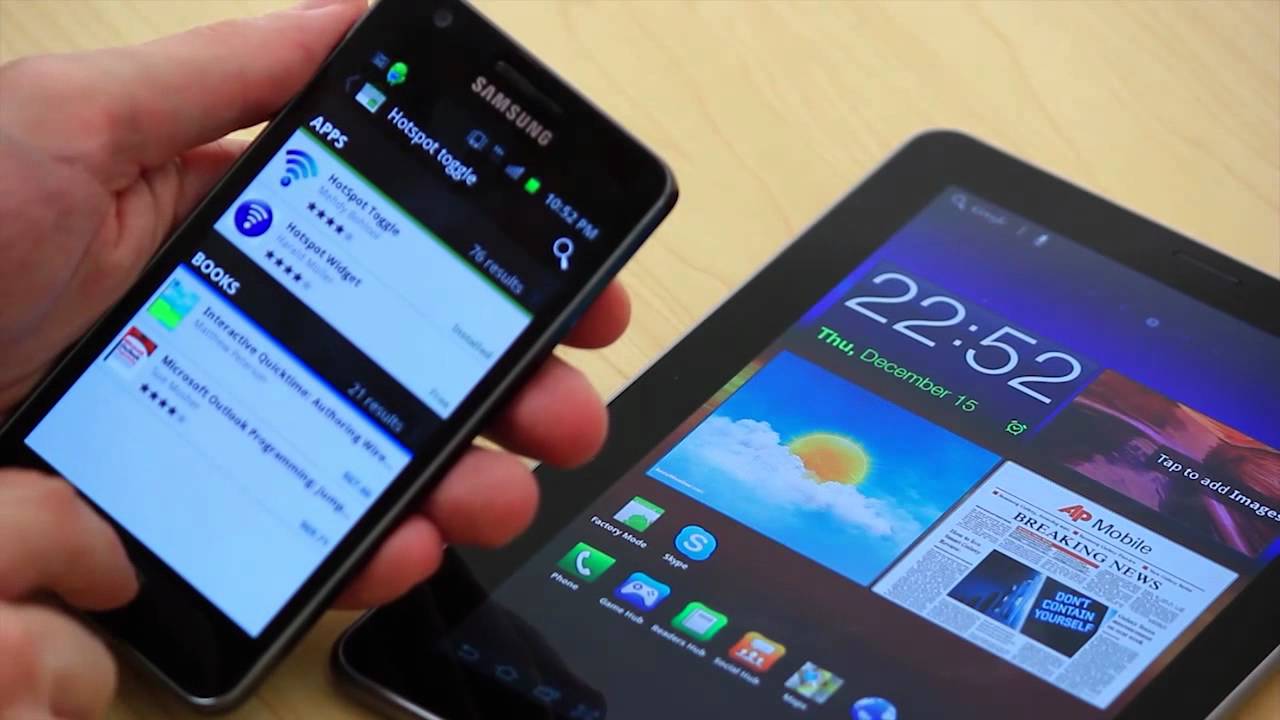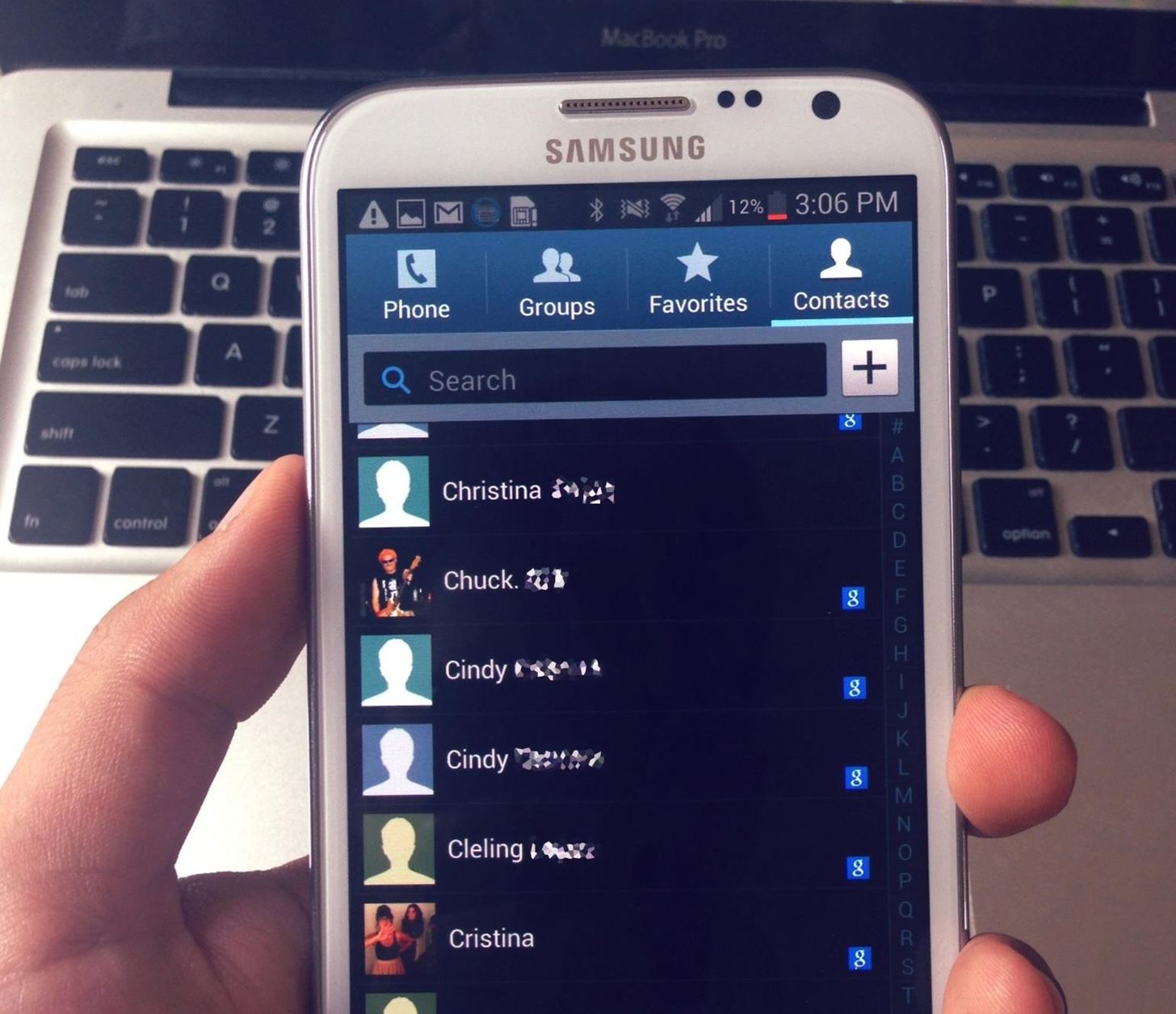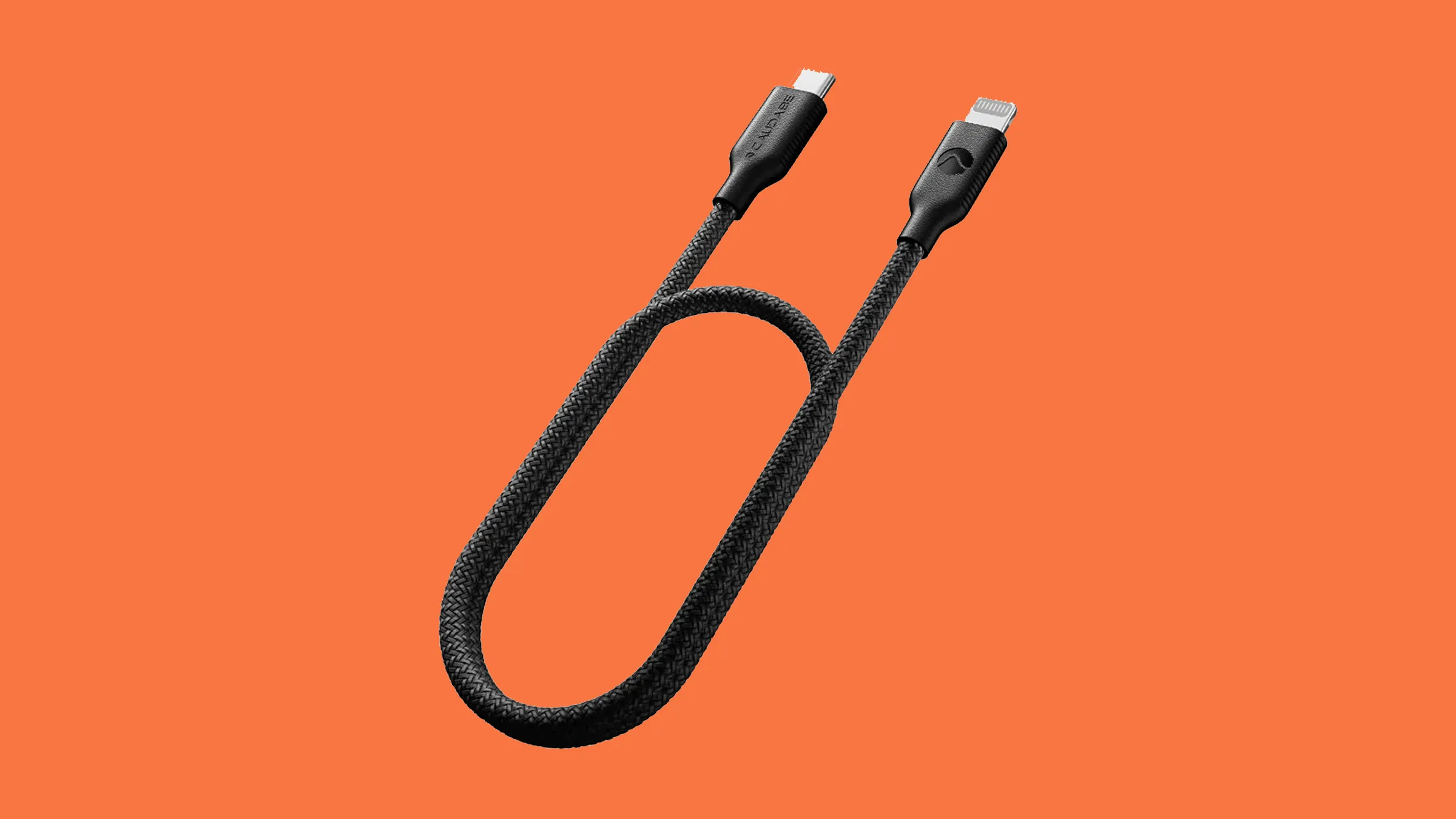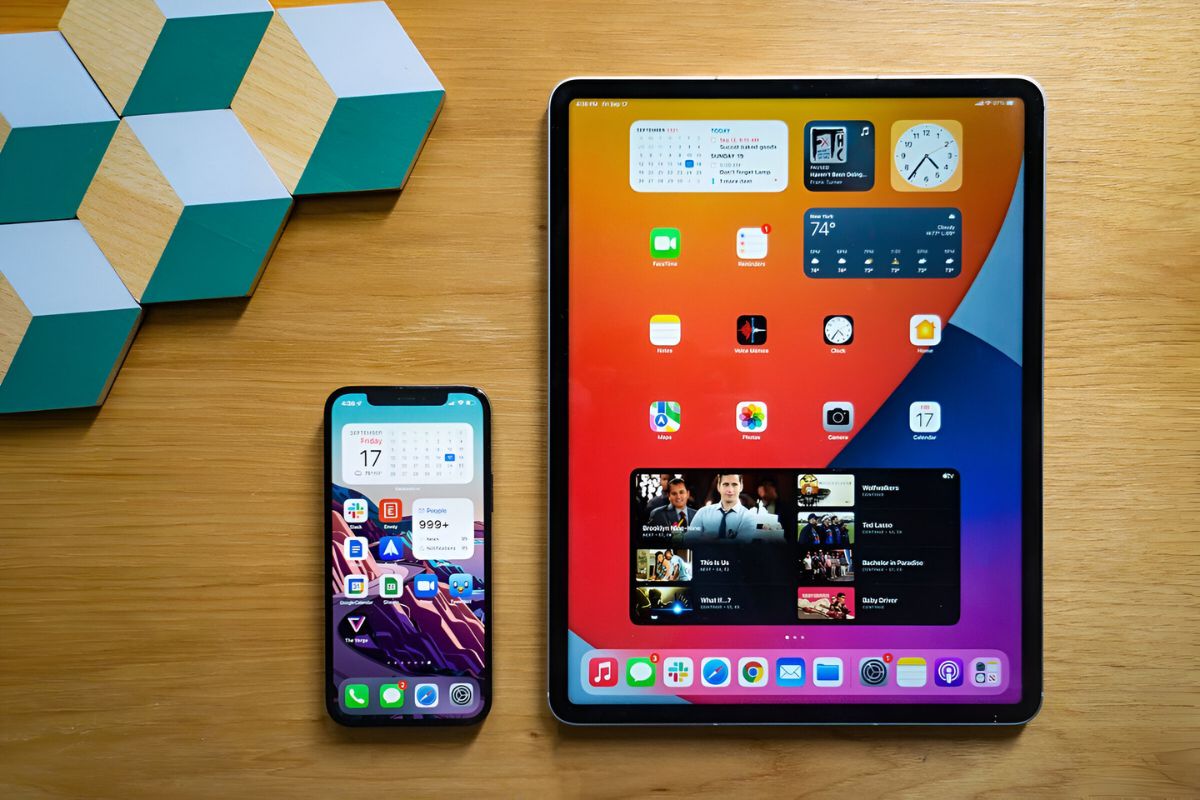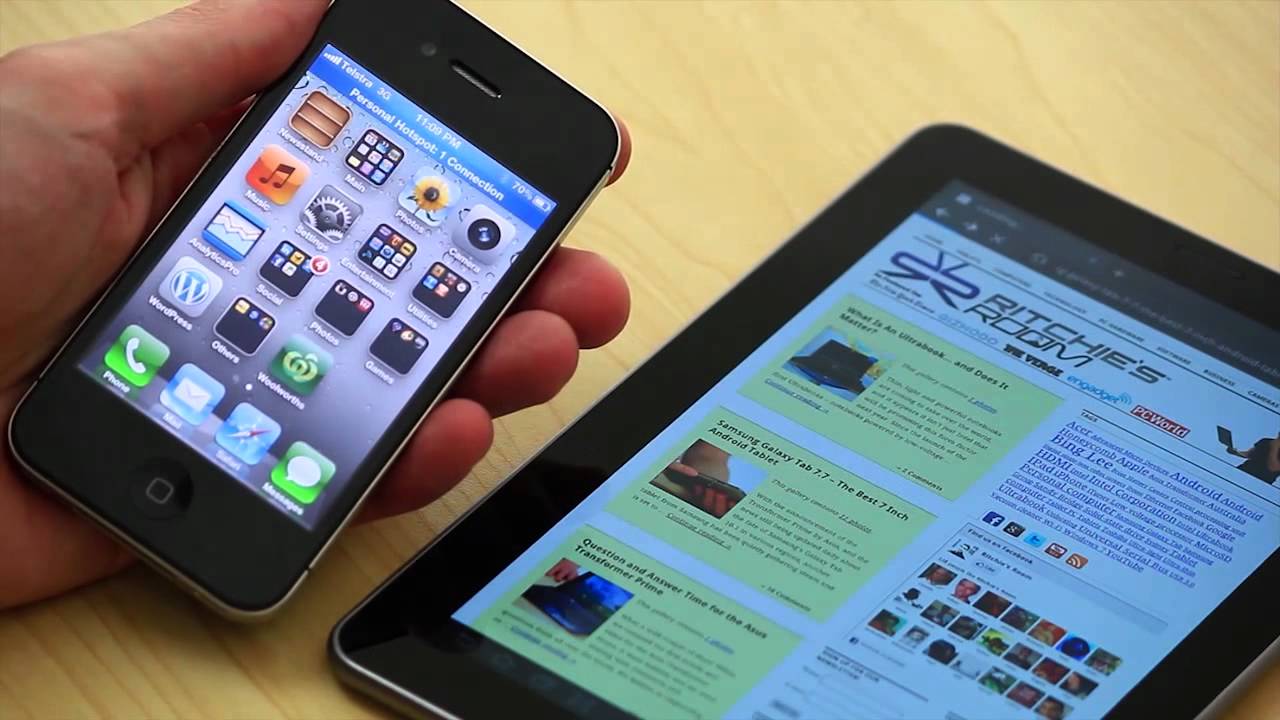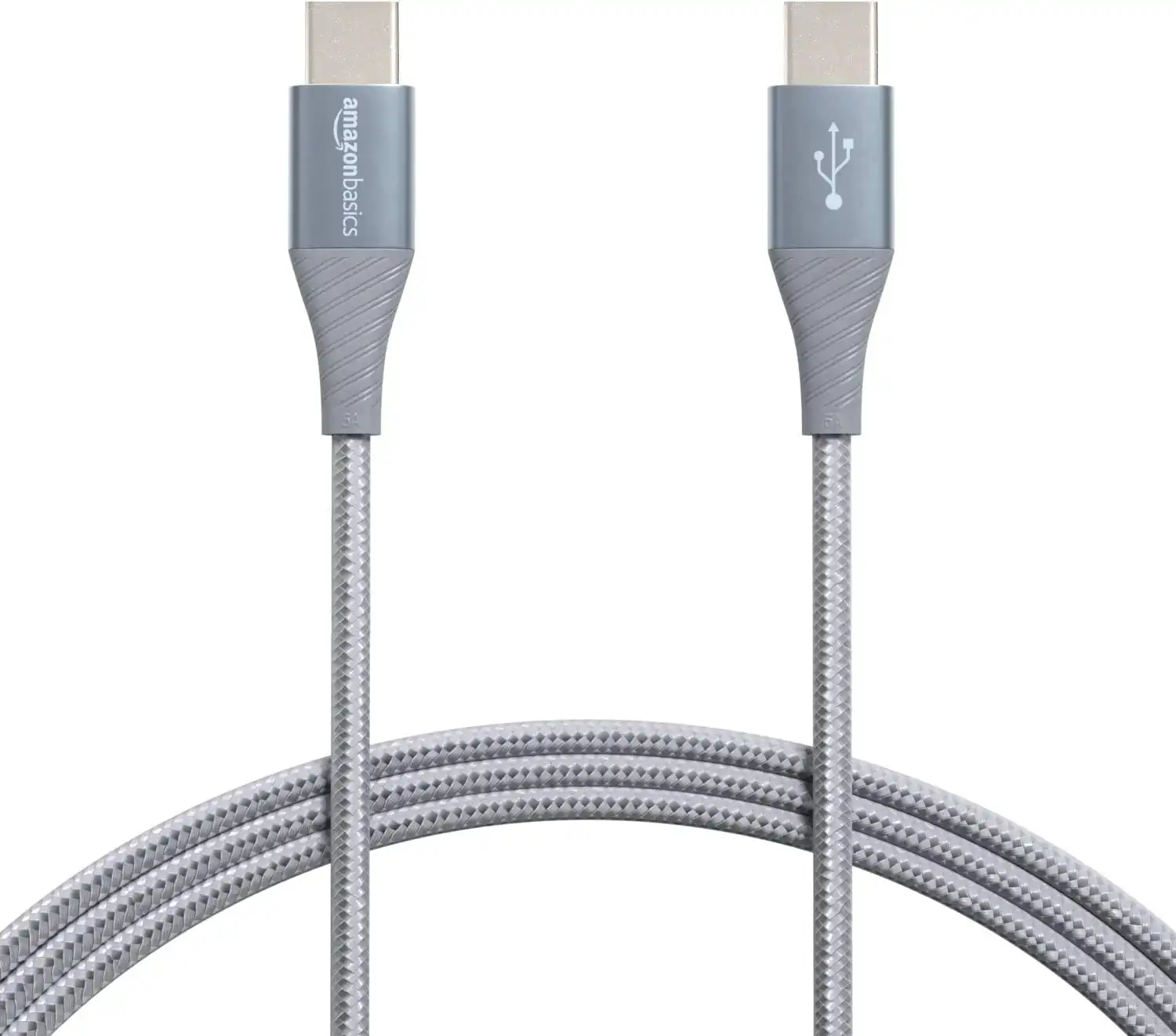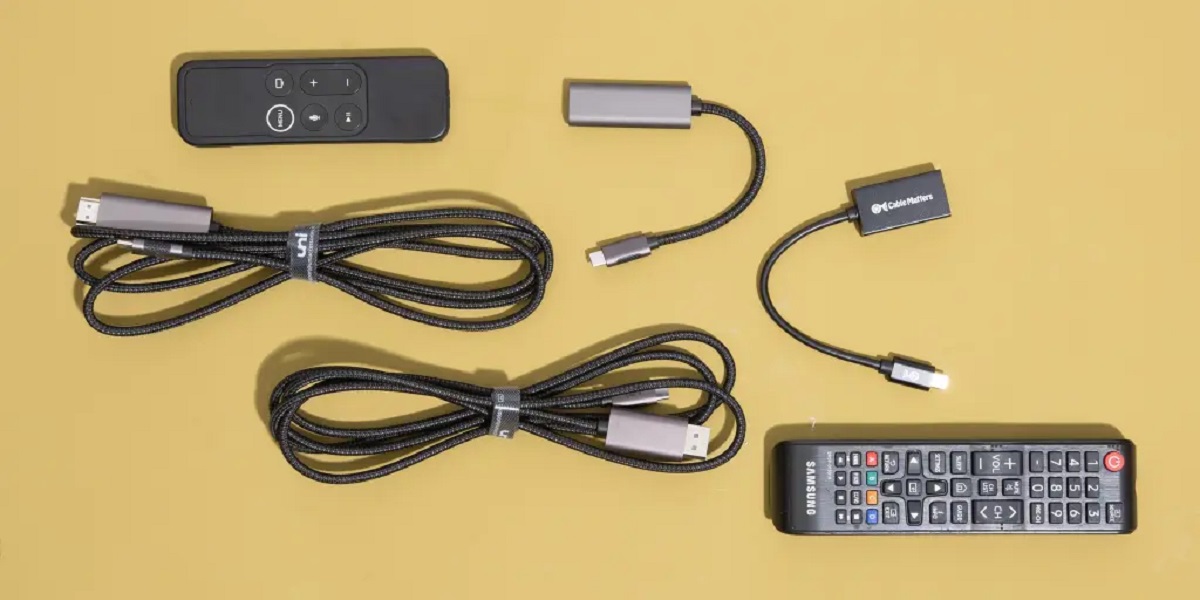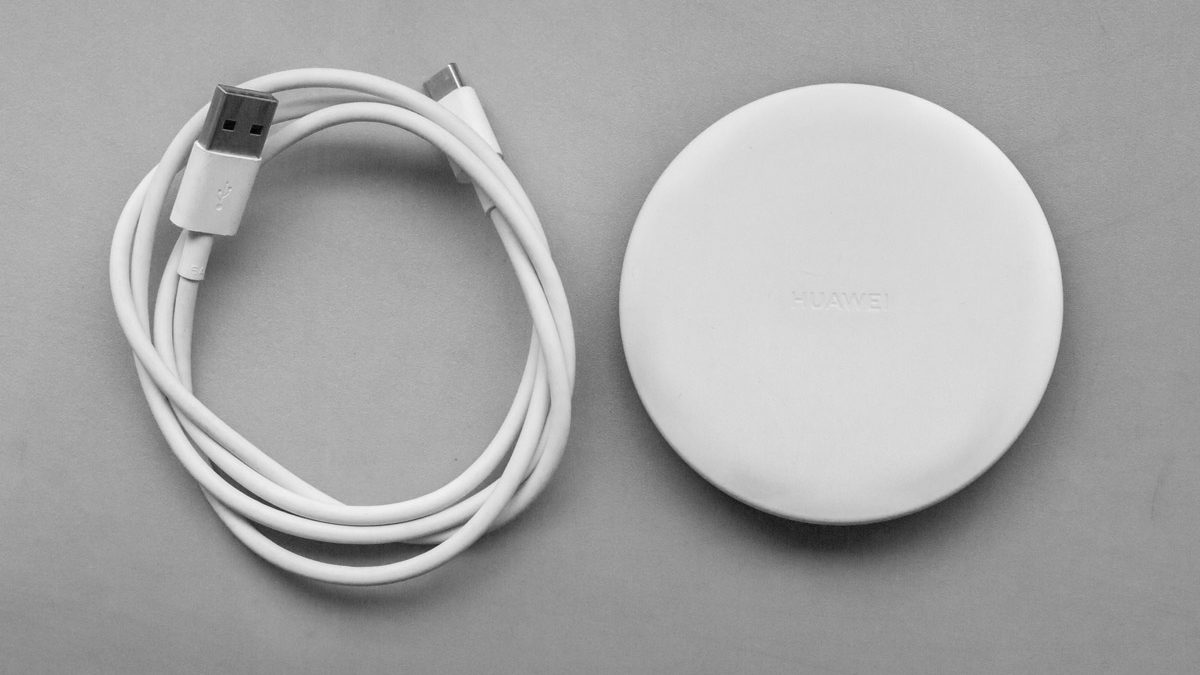Why Syncing Your Android Phone To Your Tablet Is Important
Are you tired of constantly switching between your Android phone and tablet, trying to keep your data and settings up-to-date? If so, it’s time to consider syncing your devices. Syncing your Android phone to your tablet offers several benefits that can greatly enhance your mobile experience. Let’s explore why syncing is so important.
1. Convenient Data Transfer: One of the biggest advantages of syncing your Android phone to your tablet is the ability to effortlessly transfer your data. Whether it’s your contacts, calendars, photos, or documents, syncing allows you to access and update your information across both devices without the hassle of manual transfers. This convenience saves you time and ensures that your data is always up-to-date on both your phone and tablet.
2. Seamless App Integration: Syncing your Android devices ensures that your apps are seamlessly integrated across both devices. Once you sync your phone to your tablet, you can easily access and use the same apps without the need for additional installations or updates. This not only saves storage space but also provides a consistent user experience between your devices.
3. Continuity of Work and Entertainment: By syncing your phone to your tablet, you can seamlessly switch between devices without losing your progress. Whether you are working on a document, reading an e-book, or watching a video, syncing ensures that you can pick up right where you left off. This continuity of work and entertainment enhances your productivity and allows you to enjoy a seamless multimedia experience across your Android devices.
4. Backup and Restoration: Syncing your Android phone to your tablet also acts as a backup mechanism. In the event that your phone gets lost, damaged, or stolen, you can easily restore all your important data, settings, and even app preferences on your new phone simply by syncing it to your tablet. This ensures that your valuable information is not permanently lost and provides you with peace of mind.
5. Enhanced Device Synchronization: Syncing your Android phone to your tablet creates a deeper level of device synchronization. This means that not only will your contacts and data be synced, but also your notifications, app preferences, and even browser history. This comprehensive synchronization ensures that your entire Android ecosystem is seamlessly connected, allowing for a more unified and streamlined user experience.
As you can see, syncing your Android phone to your tablet offers numerous advantages. From convenient data transfer and seamless app integration to continuity of work and entertainment, syncing enhances your mobile experience in more ways than one. So, if you haven’t already, now is the time to start syncing your Android devices and enjoy a more connected and efficient digital lifestyle.
Methods of Syncing Your Android Phone to Your Tablet
When it comes to syncing your Android phone to your tablet, there are several methods available that cater to different preferences and situations. Let’s explore three popular methods that will help you establish a seamless connection between your devices.
Method 1: Using Bluetooth
If you prefer a wireless option, syncing your Android phone to your tablet via Bluetooth is a convenient choice. To begin, ensure that both devices have Bluetooth enabled. On your phone, go to Settings, then Bluetooth, and turn it on. On your tablet, follow the same process. Once both devices are ready, open the Bluetooth settings on both devices and pair them together by selecting the other device’s name. Once paired, you can select the specific data you want to sync, such as contacts, photos, or files, and initiate the transfer. Keep in mind that Bluetooth syncing may take longer for larger files, so it’s ideal for smaller transfers.
Method 2: Using Wi-Fi
If you have a stable Wi-Fi connection and prefer faster transfer speeds, syncing your Android phone to your tablet using Wi-Fi is a great option. To get started, ensure that both devices are connected to the same Wi-Fi network. On your phone, go to Settings, then Wi-Fi, and connect to the network. On your tablet, follow the same process. Next, on your phone, navigate to Settings, then Wi-Fi & Internet, and select Hotspot & Tethering. Enable the Wi-Fi hotspot feature and set a secure password. On your tablet, access the Wi-Fi settings and connect to the hotspot created by your phone. Now, you can transfer data between the devices by simply accessing the shared network and initiating the transfer. Wi-Fi syncing offers faster speeds and is suitable for larger file transfers or syncing multiple types of data simultaneously.
Method 3: Using a Syncing App
If you prefer a more comprehensive and automated approach, using a syncing app is a convenient method to connect your Android phone and tablet. Several apps, such as Google Drive, Dropbox, or Microsoft OneDrive, offer seamless syncing capabilities. To begin, download and install the preferred app on both devices. Sign in to your account or create a new one if necessary. Once logged in, you can choose the specific files or folders you want to sync, and the app will handle the rest. These syncing apps often provide additional features, such as automatic backups, file sharing, and collaboration, making them a versatile choice for syncing your Android devices.
By adopting one of these methods, you can easily establish a connection between your Android phone and tablet, enabling smooth syncing of data and settings. Decide which method suits your preferences and needs, and enjoy the benefits of a seamlessly connected Android ecosystem.
Method 1: Using Bluetooth
Syncing your Android phone to your tablet using Bluetooth provides a wireless option for establishing a connection between the two devices. This method is ideal for smaller transfers and situations where a Wi-Fi connection is not available or preferred. Let’s explore the simple steps to sync your Android phone to your tablet using Bluetooth.
1. Enable Bluetooth: Start by ensuring that both your Android phone and tablet have Bluetooth enabled. On your phone, go to Settings, then Bluetooth, and toggle the Bluetooth switch to turn it on. On your tablet, follow the same process to enable Bluetooth.
2. Pair Devices: Once Bluetooth is enabled on both devices, open the Bluetooth settings on each device. Your phone and tablet will search for nearby devices to pair with. When your phone detects your tablet (or vice versa), select the name of the other device to initiate the pairing process. You may need to confirm the pairing on both devices for the connection to be established.
3. Select Data to Sync: After successfully pairing your devices, you can now choose the types of data you want to sync. On your phone, navigate to the Bluetooth settings and select the paired tablet device. From here, you can usually find an option to “Send” or “Share” data using Bluetooth. Select the specific files, photos, contacts, or other data you want to sync and initiate the transfer.
4. Initiate Transfer: Once you’ve selected the data you want to sync, you can start the transfer process. Depending on the specific device and Bluetooth settings, you may have different options for transferring the data. For example, you might be able to select multiple files at once and send them in bulk, or you might need to send one file at a time. Follow the prompts on your device to complete the transfer.
5. Verify Synced Data: Once the transfer is complete, verify that the synced data is now available on your tablet. Check your contacts, photos, files, or other data to ensure that everything transferred successfully. If any issues arise, you may need to repeat the steps or troubleshoot the Bluetooth connection on both devices.
Syncing your Android phone to your tablet using Bluetooth offers a wireless and convenient way to transfer smaller amounts of data between the two devices. While Bluetooth syncing may take longer than other methods for larger transfers, it’s an excellent option when Wi-Fi or syncing apps are not available or preferred. Follow these steps, and you’ll be able to establish a Bluetooth connection and enjoy the benefits of synced data and settings on your Android devices.
Method 2: Using Wi-Fi
Synching your Android phone to your tablet using Wi-Fi is a convenient and faster method compared to Bluetooth. It allows you to transfer larger files and sync multiple types of data simultaneously. Here’s a step-by-step guide on how to sync your Android phone to your tablet using Wi-Fi:
1. Connect to the Same Wi-Fi Network: Ensure that both your Android phone and tablet are connected to the same Wi-Fi network. Go to the Settings menu on each device, find the Wi-Fi section, and select the network you want to connect to.
2. Enable Mobile Hotspot: On your Android phone, open the Settings menu and navigate to the “Hotspot & Tethering” option. Enable the Wi-Fi hotspot feature and set a secure password to protect your connection.
3. Connect Tablet to the Hotspot: On your tablet, access the Settings menu, find the Wi-Fi section, and search for available networks. You should see the hotspot network created by your phone. Select it from the list and enter the password you set in the previous step to establish the connection.
4. Open File Manager or Sharing App: On both your phone and tablet, open a file manager app or a sharing app that allows you to browse and transfer files. Some popular options include Google Files, ES File Explorer, or Xender.
5. Select and Transfer Data: In the file manager or sharing app, navigate to the files, photos, or documents you want to sync. Select the files one by one or use the bulk selection option if available. Once you’ve made your selections, look for a sharing or transfer option within the app. It may be represented by an icon resembling an arrow pointing up or an option labeled “Share” or “Transfer.”
6. Choose the Target Device: Upon selecting the sharing or transfer option, you should see a list of available devices to send the files to. Look for the name of your tablet in the list and tap on it to initiate the transfer. The file manager or sharing app will begin transferring the selected files from your phone to your tablet over the Wi-Fi connection.
7. Monitor the Transfer: During the transfer process, keep an eye on the progress to ensure that all files are successfully sent to your tablet. Depending on the file size and Wi-Fi connection speed, the transfer may take a few moments or several minutes.
8. Verify Synced Data: Once the transfer is complete, navigate to the appropriate apps or file directories on your tablet to verify that the files have been successfully synced. Open photos, documents, or other files to ensure that they are accessible and properly transferred.
Synching your Android phone to your tablet using Wi-Fi provides a fast and efficient way to transfer files and sync data. It is particularly useful for larger files or when you need to sync multiple types of data simultaneously. By following these steps, you can easily establish a Wi-Fi connection between your devices and enjoy seamless syncing.
Method 3: Using a Syncing App
Syncing your Android phone to your tablet using a syncing app offers a comprehensive and automated approach to keep your devices in sync. Apps like Google Drive, Dropbox, or Microsoft OneDrive provide seamless syncing capabilities, allowing you to access and share your files, photos, and documents across both devices. Here’s how to sync your Android phone to your tablet using a syncing app:
1. Choose a Syncing App: Begin by selecting a syncing app that suits your needs and preferences. Some popular options include Google Drive, Dropbox, or Microsoft OneDrive. Download and install the app from the Google Play Store on both your phone and tablet.
2. Create an Account: Open the syncing app on both devices and sign in with your existing account or create a new one if needed. Follow the prompts to set up the account and grant necessary permissions to access and sync your data.
3. Select Files to Sync: Once you’re signed in, you can choose which files, folders, or types of data you want to sync between your phone and tablet. The app will typically provide options to select specific files or sync entire folders. Choose the desired files or folders to sync and proceed.
4. Enable Automatic Syncing: Most syncing apps offer automatic syncing options to ensure that your data stays updated in real-time. Enable the automatic syncing feature in the app settings to let it continuously sync changes made to the selected files or folders. This ensures that any modifications, additions, or deletions you make on either device are reflected on the other.
5. Access Synced Data: Now you can access your synced data on both your Android phone and tablet. Open the syncing app on either device and navigate to the synced files or folders. You can view, edit, and share your data seamlessly across both devices, providing a unified experience.
6. Collaborate and Share: If you’re using a syncing app like Google Drive or Dropbox, you can take advantage of collaboration features. Share files or folders with others, allowing them to view, edit, or comment on the documents. This fosters efficient teamwork and ensures that everyone stays on the same page.
7. Manage Storage and Settings: Adjust the app’s settings according to your preferences. Some syncing apps allow you to control different aspects such as storage usage, sync frequency, or offline access. Explore the settings to customize the syncing experience to suit your needs.
Using a syncing app offers a convenient and automated way to keep your Android phone and tablet in sync. The chosen app handles the syncing process for you, ensuring that your files are always up-to-date on both devices. By following these steps, you can effortlessly sync your data, collaborate with others, and enjoy a seamless connection between your Android devices.
Tips for Successful Syncing
Syncing your Android phone to your tablet can greatly enhance your mobile experience by ensuring that your data and settings are up-to-date on both devices. To ensure successful syncing, keep the following tips in mind:
1. Ensure a Stable Connection: Before initiating the syncing process, make sure that both your phone and tablet have a stable internet connection. Whether you’re using Wi-Fi, Bluetooth, or a syncing app, a reliable connection is essential for smooth data transfer.
2. Keep Both Devices Updated: To ensure compatibility and optimal performance, keep both your Android phone and tablet up to date with the latest software updates. These updates often contain bug fixes, security enhancements, and improved syncing capabilities.
3. Choose the Right Syncing Method: Consider the size and type of data you want to sync when selecting a syncing method. Bluetooth is suitable for smaller transfers, Wi-Fi offers faster speeds for larger files, and syncing apps provide convenience and automation for comprehensive syncing.
4. Organize Your Data: To avoid confusion and ensure efficient syncing, organize your data into folders or categories. This will make it easier to select and transfer specific files or data when syncing between your Android phone and tablet.
5. Be Patient During Transfers: Transferring larger files or syncing a large amount of data can take time. Be patient during the transfer process and avoid interrupting it to ensure that all data is successfully synced. Avoid multitasking or suspending the transfer to maintain a smooth syncing experience.
6. Regularly Check Synced Data: Periodically check your synced data on both devices to ensure that everything is properly synced and up to date. Verify that contacts, calendars, photos, documents, and other important data are correctly synced and accessible on both your Android phone and tablet.
7. Utilize Cloud Storage: If you’re using a syncing app, take advantage of the cloud storage capabilities it offers. Upload files, photos, and documents to the cloud to ensure that they’re securely backed up and accessible from anywhere, even if you don’t have your phone or tablet with you.
8. Optimize Battery and Data Usage: Some syncing methods, such as Wi-Fi syncing or using a syncing app, may consume battery power and data. To optimize your device’s battery life and data usage, consider selectively syncing specific files or adjust the syncing settings to better suit your needs and preferences.
9. Troubleshoot Syncing Issues: If you encounter any syncing issues, refer to the troubleshooting guide provided by the respective syncing method or app. Common issues may include connectivity problems, incompatible file formats, or syncing conflicts. Following the troubleshooting steps can help resolve the issues and ensure successful syncing.
By following these tips, you can ensure successful syncing between your Android phone and tablet. Take advantage of the syncing capabilities to keep your data and settings up to date, enhancing your mobile experience and providing a seamless connection between your devices.
Troubleshooting Common Syncing Issues
While syncing your Android phone to your tablet can greatly enhance your mobile experience, you may encounter common issues that can hinder the syncing process. Here are some troubleshooting tips to help you resolve these issues:
1. Check Connectivity: Ensure that both your phone and tablet are connected to a stable internet connection, whether it’s Wi-Fi or mobile data. Poor connectivity can cause syncing problems, so verify that you have a strong and reliable connection.
2. Update Software: Make sure that both your Android phone and tablet are running the latest software updates. Outdated software can lead to compatibility issues and syncing problems. Check for updates in the settings menu of each device and install any available updates.
3. Restart Devices: Sometimes, a simple restart can resolve syncing issues. Restart both your phone and tablet to refresh the system and clear any temporary glitches that may be causing syncing problems.
4. Check Storage Space: Lack of storage space on either your phone or tablet can prevent successful syncing. Ensure that you have sufficient storage space available on both devices to accommodate the data you want to sync. If necessary, delete unwanted files or move them to an external storage device.
5. Restart Syncing Apps: If you’re using a syncing app, try closing the app on both devices and relaunching it. This can help refresh the app and resolve any temporary issues or conflicts that may be hindering the syncing process.
6. Verify Account Credentials: Double-check that you are using the correct account credentials for the syncing app. Ensure that you are signed in with the same account on both your phone and tablet. Incorrect or mismatched account credentials can prevent successful synchronization.
7. Clear App Cache and Data: In some cases, clearing the cache and data of the syncing app can resolve syncing problems. Go to the App Settings, find the syncing app, and clear its cache and data. Keep in mind that this will remove any locally stored settings or data, so proceed with caution.
8. Disable Battery Optimization: Some Android devices have battery optimization settings that limit background activities to conserve power. These settings can interfere with the syncing process. Temporarily disable battery optimization for the syncing app to ensure uninterrupted syncing.
9. Contact Support: If you have tried all the troubleshooting steps but are still experiencing syncing issues, reach out to the support team of the syncing app or the device manufacturer. They may be able to provide further assistance and specific solutions based on your device and syncing method.
By following these troubleshooting tips, you can overcome common syncing issues and ensure a smooth syncing experience between your Android phone and tablet. Remember to be patient and methodical when troubleshooting, and don’t hesitate to seek additional support if needed.
Conclusion
Syncing your Android phone to your tablet offers numerous benefits and enhances your overall mobile experience. Whether you choose to sync using Bluetooth, Wi-Fi, or a syncing app, you can conveniently transfer data, seamlessly integrate apps, and enjoy continuity of work and entertainment between your devices.
Throughout this guide, we’ve explored various methods for syncing your Android phone to your tablet and provided troubleshooting tips for common syncing issues. It’s important to ensure a stable connection, keep devices updated, organize your data, and utilize the right syncing method for your needs. By following these tips, you can successfully sync your Android devices and enjoy a more seamless and connected digital lifestyle.
Remember that syncing is not only convenient but also acts as a backup mechanism, ensuring your valuable data remains intact even if one of your devices is lost or damaged. Additionally, syncing allows for enhanced device synchronization, ensuring that your entire Android ecosystem is seamlessly connected and providing a more unified user experience.
As technology continues to evolve, syncing your Android phone to your tablet becomes more crucial, allowing you to stay productive, organized, and entertained across multiple devices. Embrace the convenience and benefits of syncing, and make the most out of your Android devices.







